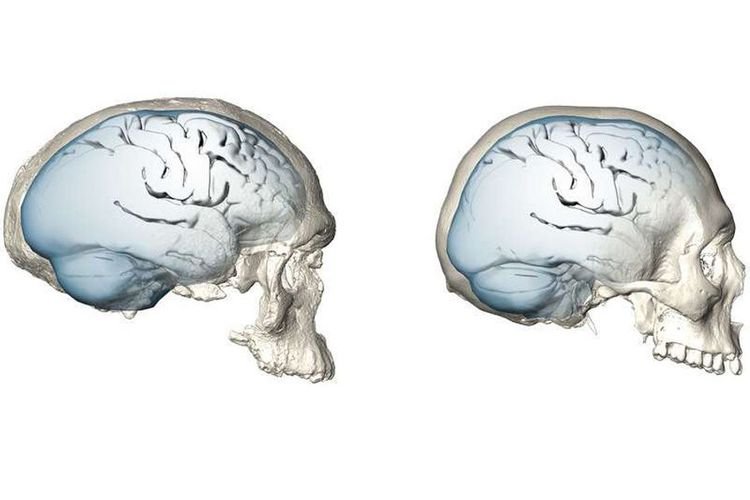
The size and shape of the human brain today is the result of evolution for hundreds of thousands of years. In ancient times, the shape is not as bad as it is now.
In the study, scientists examined the size and shape of the brain of 20 Homo sapiens fossils, one of which is 300,000 years old.
Although the size is the same, it turns out the brain changes from a slightly oval to a round at 100,000 to 35,000 years ago.
Published in the journal Science Advances, these brain shaping changes are key to our current brain advancement.
Simon Neubauer, a physical anthropologist from the Max Planck Institute for Evolutionary Anthropology in Germany, says that there are two parts of the brain that make the brain shape rather round, the parietal area and the cerebellum of the brain. These two parts of the brain are slightly out of shape.
The parietal lobe is an important center in connecting different brain regions and is involved in functions such as orientation, attention, sensorimotor transformation underlying planning and visuospatial integration.
Cerebellum not only functions in motor motion such as movement coordination and balance, but also functions for working memory, language, social cognition and affective (emotional) processing.
According to Neubauer, the rounded shape of the brain will occur several months after the baby is born.
The period when we have a new brain shape, it turns out in accordance with archaeological evidence when humans have the ability in the arts and ornaments, the introduction of color, the burial of corpses, the use of complex equipment, and carving bones, like modern behavior that occurred about 40,000 to 50,000 years ago.
The earliest Homo sapiens fossils we have come from sites in Morocco 300,000 years ago and ancient sites in Ethiopia 195,000 years ago. The shape of the brain is elongated similar to the Neanderthal man who died extinct tens of thousands of years ago.
Researchers also analyzed Homo sapiens fossils from the north, east and south of Africa, the Middle East and Europe.
These findings add to the accumulation of archaeological and paleoanthropological evidence suggesting that Homo sapiens is a species that develops with deep African roots and undergoes gradual changes in the modernity of behavior, brain organization and potential brain function.